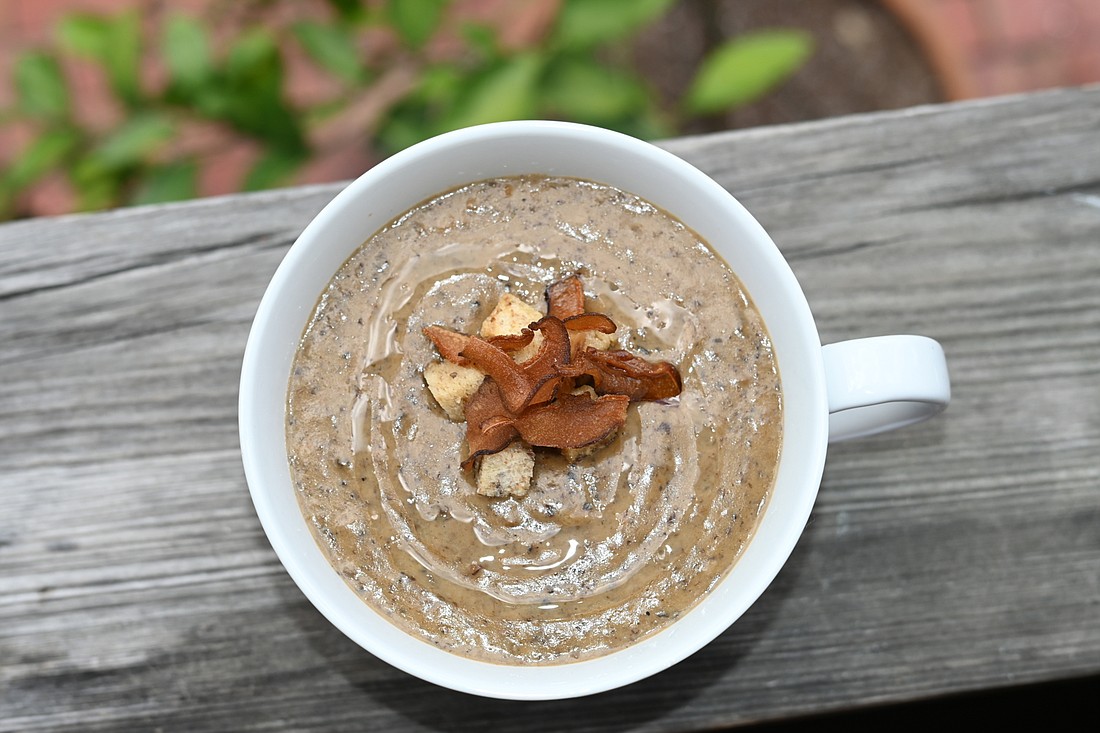- May 5, 2025
-
-
Loading

Loading

This primordial fungus concoction is the signature soup on the Indigenous menu, and it’s made from an earthy blend of porcini, shiitake and cremini mushrooms.
Chef Steve Phelps says cooking mushrooms can be tricky because they’re 80 percent water, and sometimes they need to be dried out before they can be used as ingredients.
That’s interesting, because the wild mushroom bisque comes out so thick you could probably eat it with a fork.
Phelps says newcomers to his restaurant often say that they’re coming specifically to try the bisque.
“If I took if off the menu, there would be a mob out front,” he jokes. “I even have people that I’ll freeze a couple quarts and mail it to them. That’s expensive, but if they want it, I’ll do it.”
The recipe actually followed Phelps from his early days as a chef in Cleveland.
Phelps says he was classically trained as a French chef and began working on soups and sauces early in his career.
When he first made the wild mushroom bisque more than a decade ago, he was trying to make do with extra ingredients from a beef stroganoff dish he had been taught to make.
You can tell it has its origins in a meat dish; it has a rich and savory flavor that would tempt any carnivore.
“It doesn’t want to adapt,” says Phelps. “It doesn’t like evolutions.”
Phelps starts by slicing the mushrooms really thin, and he caramelizes them with a mixture of vegetable mirepoix, garlic, fresh herbs, chicken stock and beef stock. Phelps caramelizes the mixture for hours, and adds sherry as a de-glazer.
The soup has cream in it, says Phelps, but not a lot. Cream, butter and flour. The watched pot will cook for almost three hours, says Phelps, and it’s topped with rye croutons and a fried shiitake mushroom before it’s served.
“It’s just really clear on mushroom density,” he says. “It basically cooks for two or two and a half hours before we even add the cream to it.
“There’s a pot on every day. During season, we sometimes have to make two pots a day.”
Phelps has loved mushrooms his whole life. He was the youngster asking for mushroom on pizza when other kids his age were asking for pepperoni or sausage.
Now, he can not only identify a mushroom in a blind taste test, but he can probably tell you whether it was dried or roasted before it was cooked.
The key to preparing mushrooms, he says, is to cook them down and cook them down some more.
“Whether you’re roasting them in the oven or you’re cooking them down in butter or in oil, the longer they go, the umami flavor just keeps coming out,” he says. “Some people just make a mushroom soup or sauce and they just bring it to a boil and puree it, but you’ve got to reduce stuff. You’ve got to concentrate stuff. Changing the flavor profile from what you would taste sautéed to what you would taste roasted and that’s night and day too.”
Phelps says shiitake mushrooms grow well in Florida, and he sources them locally from Petrichor Mushrooms and from a smaller farm in Myakka. But you need more space to grow cremini mushrooms, he says, and he supplements his stock with mushrooms from commercial growers in Pennsylvania.
Sometimes, says Phelps, vegetarians want to try the bisque, and they aren’t deterred when they learn it has both chicken and beef stock in it. And sometimes, he says, vegetarians will order the dish without even asking what’s in it.
“We even get people to cheat on that,” he says, “Which is fascinating.”